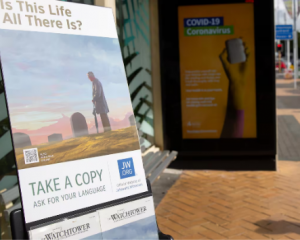Foreign Minister Murray McCully says an air force inquiry is expected after a flight to Antarctica carrying 117 passengers was forced to land in a whiteout after being cleared for a safe landing.
The RNZAF Boeing 757 had to circle the Pegasus airstrip near Scott Base for 2 hours on Monday and made two aborted approaches before making an emergency landing in reduced visibility and freezing fog.
Mr McCully, who was on the flight, said: "We clearly knew that there was a capacity for this to have an untidy end, and we were enormously relieved that it didn't."
The air force reviewed the weather at the "point of safe return" or PSR - when there was still enough fuel to get back to Christchurch.
The 757 was given the green light to land but Antarctic's notoriously changeable weather stirred up half an hour after the plane passed the PSR.
"We did not have enough fuel to come home, and we had no means of making an unorthodox landing down there," Mr McCully said.
"It culminated in what they call a white-out landing. After burning out most of the fuel you get in as close as you can with the instruments and for the last 100ft or so try and find a way down with the pilot using his wits, basically."
He said the passengers and crew went quiet as they approached the landing at around 5pm.
"All I can say is that I'm very relieved to be here. Having gone into that situation you need to understand the extraordinary skill that the pilot and his crew showed in being able to get us down in circumstances that were really, incredibly difficult."
He said he expected the air force to review the landing. "There will be some sort of internal inquiry I'm sure about how one of its planes, with quite a lot of people on board, was able to get into Antarctica without the ability to get back or to land."
A defence force spokesman said last night the event was being investigated to ensure all lessons were learned.
The spokesman said it was the first time that the air force 757 had landed on the ice in this way. The aircraft's instruments were used below the minimum altitude threshold until the pilots could see the runway.
Air NZ would soon conduct test flights to the Pegasus airstrip as part of a plan to transport American and NZ scientists. Unlike the air force 757s, Air New Zealand's 767 would be able to make the return journey without refuelling. A test run was planned on October 5, but was postponed to November due to bad weather.
- Isaac Davison












